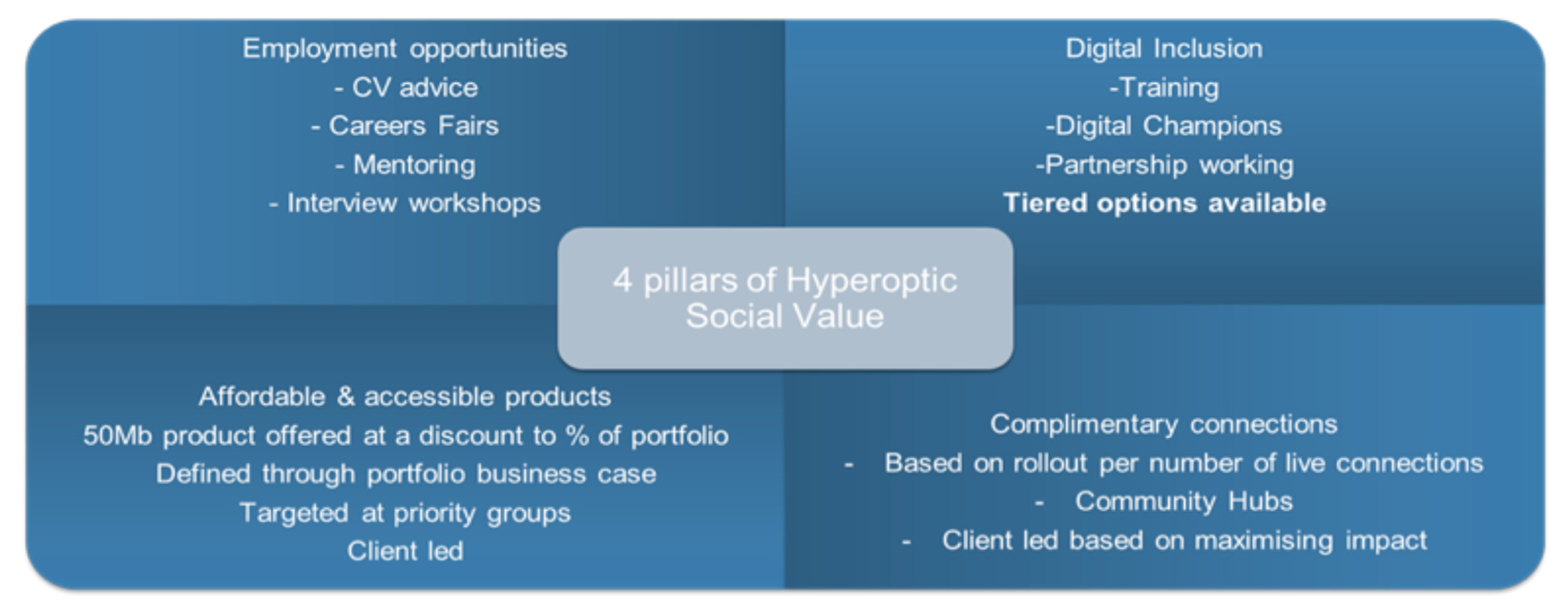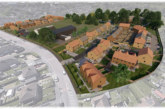Gigabit broadband: how to calculate its social value. Hyperoptic considers how the Social Value Act is making a difference.
The Public Services Act, more often known as the Social Value Act, came into being on the 31st January 2013. It mandates those commissioning public services to think about how they can also secure wider social, economic and environmental services when making purchasing decisions.
Research last year from Social Enterprise UK shows that the act has made an impact and that councils increasingly see social value as an important way to drive economic growth in their local areas. The report says that 82% of local councils believe social value drives higher levels of growth, while 42% of councils have found that it has reduced social inequalities. Furthermore, 45% of survey respondents said that their council had a working social value policy — a sharp rise compared with 24% in 2016. And it is not just local authorities that use it, social value is also embedded into project calculations from social housing organisations, central government and devolved governments across the UK.
Defining social value in the context of digital infrastructure
But just how do we define ‘social value’? Given it is a broad concept, and as such open to debate, it can be contestable and difficult to define. The UK government thinks of social value as having regard to economic, social and environmental wellbeing in connection with public services contracts. But most best case examples refer to physical infrastructure.
Ascertaining impact to digital infrastructure is less understood. Hyperoptic, as the UK’s largest Gigabit broadband provider has sought to start this conversation. Since the company was founded in 2011, we have put those in social and local authorities at the front and centre of our plans and are acutely aware of the benefits that hyperfast broadband brings to the communities we work in. Our approach to social value is inspired by the impact of our activities on individuals, as it brings in the impact on the person. Now we are seeking to measure it.
In seeking to put metrics around it, our approach is inspired and informed by thinking around four ‘pillars’ which are complimentary connections, affordable and accessible products, employment opportunities, and digital inclusion as illustrated.

Social impact vs. economic impact
We believe that the impact of a broadband connection can be split into two categories:
- Economic impact on businesses, consumers, and their finances.
- Social impact on communities and on society, including impact on individuals’ wellbeing.
 To take social impact first, we asked Simetrica, a research consultancy specialising in social impact measurement to look at various factors. The key finding reveals that having access to superfast broadband is associated with an increase in wellbeing worth £222.25 per household per year. The study suggested several channels through which this could occur and indeed with our current adjustment to a ‘new normal’ many have become even more apparent, these include:
To take social impact first, we asked Simetrica, a research consultancy specialising in social impact measurement to look at various factors. The key finding reveals that having access to superfast broadband is associated with an increase in wellbeing worth £222.25 per household per year. The study suggested several channels through which this could occur and indeed with our current adjustment to a ‘new normal’ many have become even more apparent, these include:
- Greater educational opportunities — enhancing Internet access provides a wider range of educational options to users. Broadband with higher bandwidth allows users to access information with less disruption. For example, the recent proliferation of massive open online courses (MOOCs) has partly been unlocked by wider access to fast broadband, with universities increasingly driving this trend.
- Greater entertainment options — high-speed broadband allows users to access and download entertainment more reliably due to a higher bandwidth. As with education, this channel has become increasingly prevalent in recent years with the proliferation of online streaming services.
- Reduced isolation and loneliness — access to the Internet allows socially isolated individuals (for example housebound individuals and individuals living in rural areas) to more easily connect with others through the Internet via social media and other similar platforms.
- Improved access to the community — the Internet provides a place where residents can easily contact one another, potentially fostering a greater sense of community.
- Increased choice in consumption and lower prices — the Internet provides users with greater choice through online shopping websites, often coupled with lower prices than on the high street.
- Increased leisure time — information about services is readily available online. This reduces the time it takes someone to find what they are looking for, increasing the amount of time they have for other, more enjoyable, activities.
Economic impact
Arguably economic impact is a little more understood and centres around the following:
- e-health services enabled by high-speed broadband is already well established but has taken off during the current pandemic period and includes online doctor consultations and the ability to order prescriptions online. One study estimates that if 5% of GP appointments were replaced with teleconferencing, each user would save 3.3 hours per year.
- Teleworking was already well established but is now firmly part of every day working for many who appreciate that it allows them to substitute travelling for more fulfilling activities. Fewer commutes also lead to financial benefits through a reduction in travel costs and less vehicles on the road means reduced pollution.
- Economic transfer of providing subsidised connections — when a subsidised connection (either an affordable or a complimentary connection) is provided, there is often an economic transfer from a high-speed broadband provider to the disadvantaged households. Local authorities can administer the distribution of affordable-connection vouchers, ensuring discounts effectively reach individuals who would benefit most from them.
Longer term social and economic benefit
Whereas the above describes many of the immediate impacts, arguably much greater benefit from enhanced digital infrastructure occurs over a longer period. For instance, better broadband tends to mean people use the Internet more and enhance their computer skills, which can increase wellbeing by £1,408.24 per year. And of course, gaining computer skills may also affect the likelihood of becoming employed, with Simetrica calculating the wellbeing uplift experienced by individuals who receive employment training to be £807.13
High speed broadband can also bring communities together physically via hubs such as community centres where people come to meet as a community, seek advice and help, and access services. These can be hugely beneficial and act as a lifeline for many people. Hyperoptic believes community hubs are essential to reaching and spreading digital inclusion to all sections of society.
Many of the factors highlighted above are now available via a Social Value Calculator to show how much value hyperfast broadband can bring to communities. More details are available here: https://www.hyperoptic.com/social-value/
Header image ©alphaspirit/AdobeStock.









